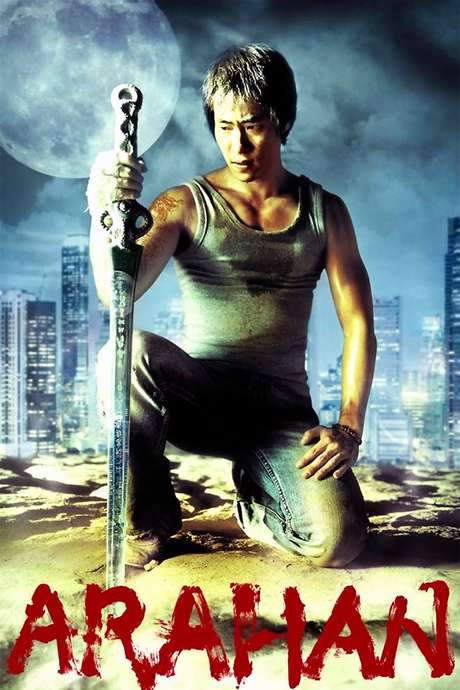
Arahan
Year: 2004
Runtime: 114 mins
Language: Korean
Director: Ryoo Seung-wan
Determined to aid the oppressed, Sang-hwan joins the police but is met with scorn and little respect. His fortunes shift when he encounters the enigmatic Seven Masters, who teach him to wield an immeasurable, ultimate power, turning him into the last hope for justice.
Warning: spoilers below!
Haven’t seen Arahan yet? This summary contains major spoilers. Bookmark the page, watch the movie, and come back for the full breakdown. If you're ready, scroll on and relive the story!
Arahan (2004) – Full Plot Summary & Ending Explained
Read the complete plot breakdown of Arahan (2004), including all key story events, major twists, and the ending explained in detail. Discover what really happened—and what it all means.
Long ago, a warlord sought a fabled key that would grant the power to rule the world. This pursuit fractured countless lives as men killed one another. The Tao Masters, sworn to refrain from human battles, watched in restraint—until one, Heuk-woon, Jung Doo-hong, was horrified by the atrocities and intervened, killing the warlord and seizing the key to “bring peace” through power. The remaining six Tao Masters imprisoned him in an underground dungeon and took turns guarding the key until the true Arahan arrived.
In the present day, a clumsy auxiliary police officer Sang-hwan, Ryoo Seung-bum, is accidentally struck by an energy attack from Eui-jin, a prospective Aruchi (female Tao master). She then leads him to her father Ja-woon, Ahn Sung-ki, the Maruchi and guardian of the key. They sense Sang-hwan carries an unusually strong Qi and offer to train him, a chance he eagerly accepts in hopes of finally earning respect instead of laughter and blows. After some initial missteps, he begins to show remarkable skill and potential.
Meanwhile, construction crews uncover Heuk-woon’s dungeon, and the ancient terror—who has survived for centuries by drawing on dark Qi—sounds the hunt anew. Heuk-woon’s ruthless pursuit pushes him to drain the life energy of those he encounters, leaving only Eui-jin’s father and Mu-woon, Yoon Joo-Sang, still standing in his way. In a bold rush to seize the key, Heuk-woon targets the masters one by one, tightening the noose around the fragile balance of power.
When Heuk-woon finally breaches the Tao school, Eui-jin and Sang-hwan struggle to halt him. Sang-hwan lands a lucky hit with a small boulder, and Mu-woon gives chase before meeting a fatal sword thrust. Ja-woon then explains the dark history of Heuk-woon and entrusts each of them with half of the key, setting the stage for a hurried escape from town in a waiting car. Eui-jin, unwilling to abandon her father, decides to push forward with Sang-hwan, and he wrestles with his own anger before choosing to ride on.
The final confrontation erupts in the city museum, where Heuk-woon manages to steal their halves of the key, yet is ultimately defeated by Sang-hwan’s renewed resolve and growing power. The key—an image of a dragon—seeps back into the ground, leaving the city with a sense of uneasy peace and new possibilities. The thief from the opening scenes is once again pursued, this time by a team that includes Sang-hwan and Eui-jin, who face their own rough edges and surprising synchronicity as a duo. The closing shot lifts the camera toward the skyline, with figures leaping across rooftops as the city continues to move forward.
Last Updated: October 09, 2025 at 16:30
Unlock the Full Story of Arahan
Don't stop at just watching — explore Arahan in full detail. From the complete plot summary and scene-by-scene timeline to character breakdowns, thematic analysis, and a deep dive into the ending — every page helps you truly understand what Arahan is all about. Plus, discover what's next after the movie.
Arahan Timeline
Track the full timeline of Arahan with every major event arranged chronologically. Perfect for decoding non-linear storytelling, flashbacks, or parallel narratives with a clear scene-by-scene breakdown.

Characters, Settings & Themes in Arahan
Discover the characters, locations, and core themes that shape Arahan. Get insights into symbolic elements, setting significance, and deeper narrative meaning — ideal for thematic analysis and movie breakdowns.



